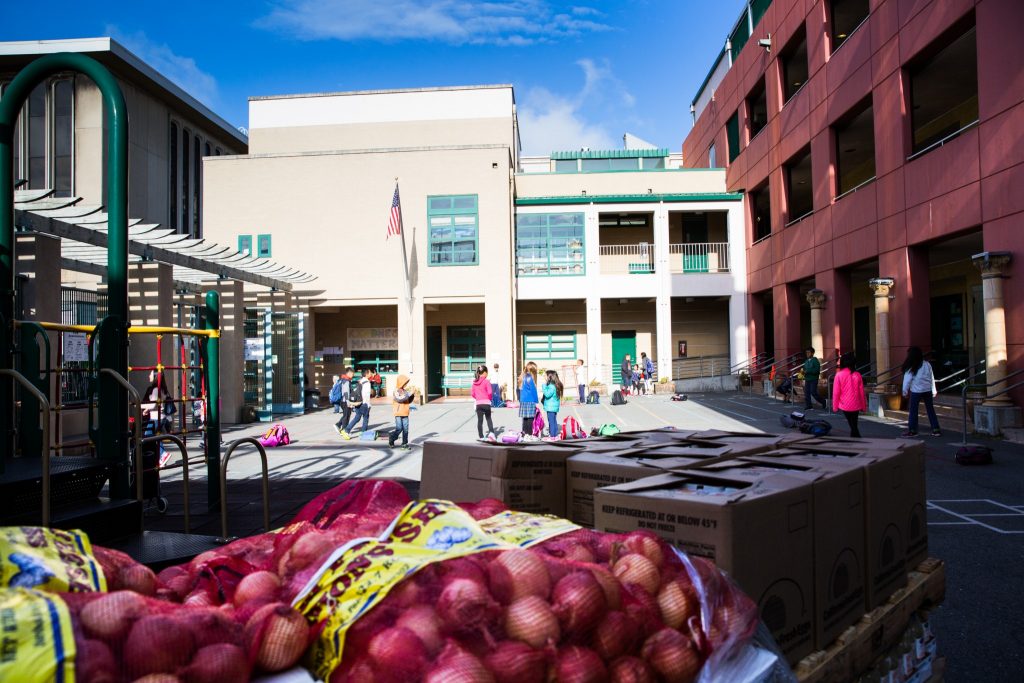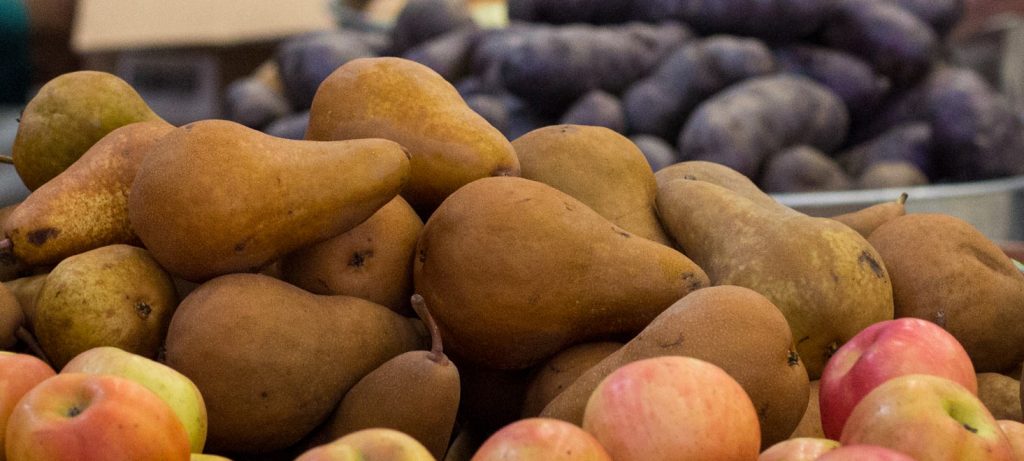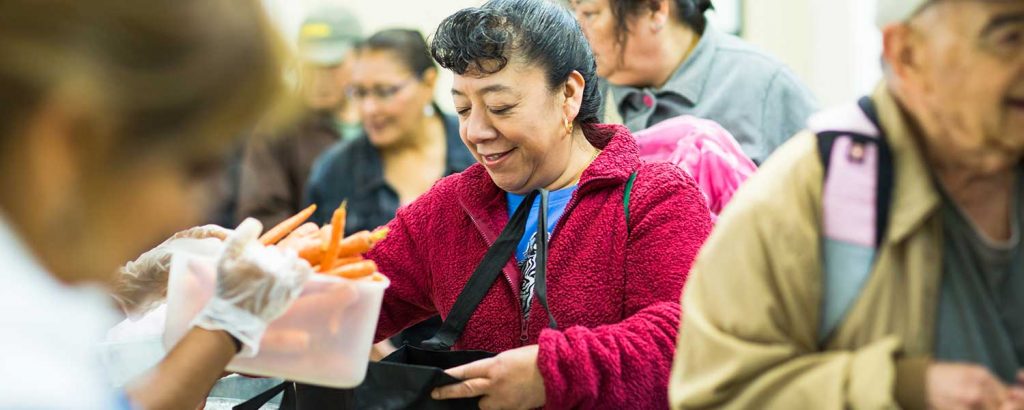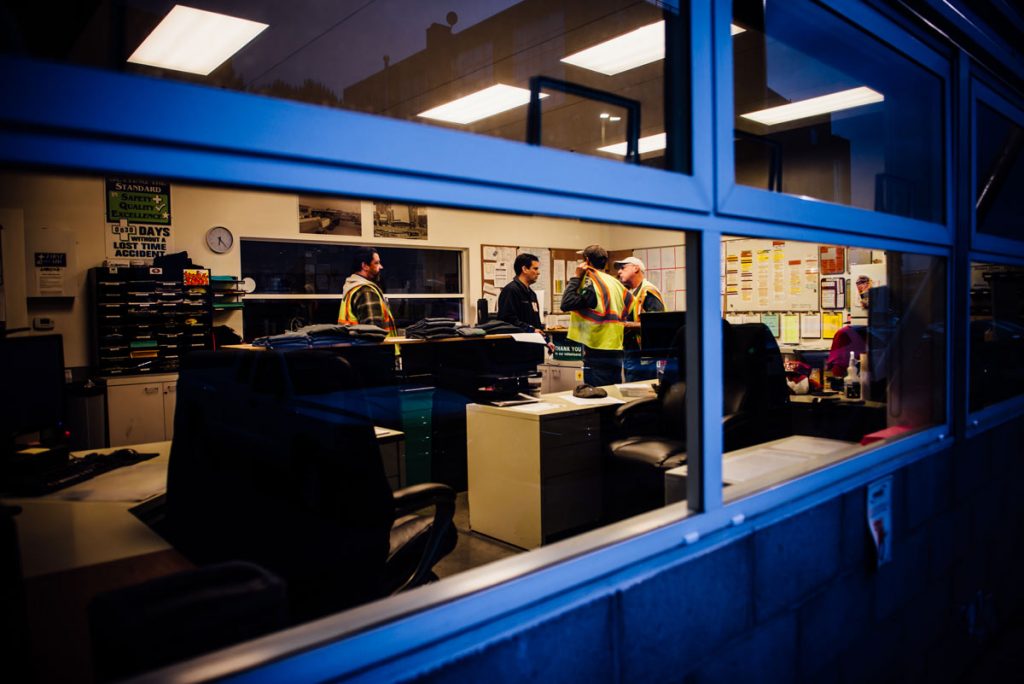食物站網絡
November 27, 2018
November 27, 2018
November 27, 2018
Ways to Give
November 27, 2018
To participate in this program, you must be a senior at least 60 years of age who has income at or below 130% of the Federal Poverty Income Guidelines. For more information and eligibility requirements, click below for the language you need. To access a calendar of CSFP food distribution sites (pdf), click here.
English Chinese Russian Spanish
This federal program is officially known as the Commodity Supplemental Food Program (CSFP). It is also referred to as the Supplemental Food Program (SFP), Senior Food Box Program, and the Monthly Food Box.
This institution is an equal opportunity provider. Click here for more information.
November 27, 2018
November 27, 2018
November 27, 2018
June 8, 2018
June 9, 2017
Ways to Give
December 20, 2016
Mayella is a Food Bank participant and pantry volunteer. This is her story.
“The first time I came home with a bag of Food Bank groceries, it was like a weight had been lifted. My husband and I could not find work, and it was by chance that a pantry volunteer overheard that we were going hungry. When she gave us food, it changed my life.
Today, I’m a volunteer at that same pantry because I want to give back to my community.
The holidays are extra special at the pantry: we put on music, and I bake cookies for everyone. I don’t have a lot of money, but I can bake, I can share, and I can give my time.
For my family’s holiday meal, my husband and I go fishing, and then I cook everything I get from the Food Bank. My kids go back to school and tell everyone they’ve had a holiday feast. They don’t know the stress it is to put food on the table. They’re just happy to have a big holiday meal. And that’s the way the holidays should be.
Thank you for helping make sure the Food Bank can give me and my family, and everyone who needs some help, a very special holiday.”
December 6, 2016
It’s 5 am, and the roll-up door closes with a metal clunk. Secured inside the truck’s cargo hold are dozens of pallets of food, ready to be delivered to pantry sites throughout the city.
Food Bank driver and lead dispatcher Marc Zaminsky checks the log one last time and fires up the truck. He pulls out of the Food Bank’s driveway onto the quiet streets of San Francisco.
His first stop is Marshall Elementary School, located in the Mission District. He pulls up to the curb, then uses the truck’s lift to lower the pallets of food to street level. Marc then wheels the food inside.

Today’s delivery features cantaloupe, tomatoes, lettuce, celery, rice, raisins, boxes of cereal, oranges, potatoes, carrots, apples and eggs. Volunteers take care to display the fresh produce and other products so they are ready when families arrive to select their groceries for the week.

Next up is a Single Room Occupancy hotel a few blocks away. The pantry coordinator is waiting by the door. She walks to the curb to greet Marc. The hallway is too narrow for the pallet jack so the pantry volunteers pitch in to help carry the boxes inside. The pantry will open in 30 minutes, so the volunteers quickly unload the boxes and set up the pantry tables.
Afterward, three more stops are made, at a community center, a church, and a middle school, until finally, the cargo bay is empty. Marc checks off his log and heads back to the Food Bank.
Back at the Food Bank, Marc pulls into a loading bay, and the work begins again. The truck is loaded with pallets of food. The heaviest items, like potatoes and melons, layer the bottom of the pallet. Lighter, crushable items like cereal and eggs go on top.
Once the truck is loaded, Marc checks in at the dispatch room for any last minute changes. Then, he heads back into the city to bring more food to the people who need it.

“This is the most rewarding job I’ve ever had. When you arrive at the pantries, people are smiling and happy to see you. There’s joy because you’re bringing them relief, you’re bringing them food,” says Marc Zaminsky.
Get Food Bank Updates
Privacy & Cookies: This site uses cookies. By continuing to use this website, you agree to their use. To find out more, including how to control cookies, see our Privacy Policy here.

Share